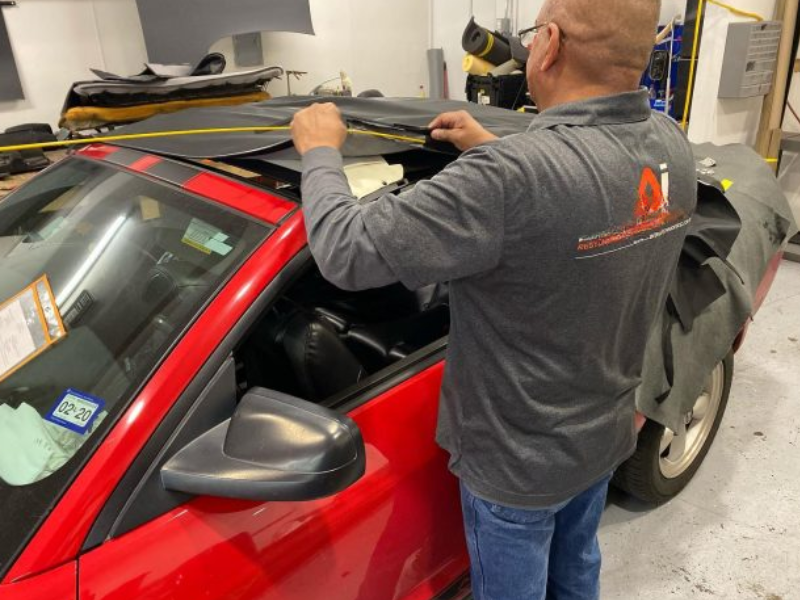Last Updated on October 6, 2023 by Matthew Lloyd
Yes, you can clean a MAP sensor. Cleaning the MAP sensor is essential to regular maintenance, especially for modern diesel cars. The intake manifold, where the MAP sensor is located, can accumulate oily residues due to the combination of exhaust gases from the EGR valve and oil vapors from the crankcase breather. This oily mess can coat the MAP sensor, leading to potential performance issues. Cleaning the sensor can help ensure proper airflow and optimal engine performance.
Why is Cleaning the MAP Sensor Important?

Cleaning the MAP sensor is important for several reasons:
- Restoring Performance: A dirty or clogged MAP sensor can lead to drivability issues, such as rough idling, stalling, and poor gas mileage. Cleaning the sensor helps restore its proper function and ensures accurate air-fuel ratio calculations.
- Preventing Engine Damage: A faulty MAP sensor can cause the engine to run too rich or too lean, potentially leading to engine damage over time. Cleaning the sensor helps prevent these issues and promotes a healthier engine.
- Cost-Effective Maintenance: Cleaning the MAP sensor is a relatively simple task that can be done at home. It doesn’t require expensive tools or replacement parts, making it a cost-effective maintenance measure.
Step-by-Step Guide to Cleaning a MAP Sensor

Before we begin, it’s important to note that the specific steps and components may vary depending on your vehicle’s make and model. Always refer to your car’s manual for accurate instructions. Now, let’s go through the general process of cleaning a MAP sensor:
- Prepare the necessary tools: Gather the following tools before starting the cleaning process:
- Size 10 wrench
- Screwdriver
- Electric parts cleaner (avoid using carb cleaner, as it can damage plastic)
- Access the MAP sensor: Open your car’s hood and locate the engine cover. Remove the engine cover to access the intake manifold, where the MAP sensor is usually located.
- Detach the MAP sensor: Depending on your car, you may need to disconnect a clip or remove a tab to free the sensor. Carefully detach the connector for the MAP sensor and move the assembly out of the way to create more working space.
- Remove the mounting bolt: Using a size 10 wrench or appropriate tool, loosen and remove the bolt securing the MAP sensor. Keep track of any accompanying tabs or bolts.
- Inspect the MAP sensor: Take a close look at the MAP sensor to assess its condition. You may notice a buildup of oily gunk, which can impair its functionality.
- Clean the MAP sensor: Spray the cleaner directly into the sensor’s opening using an electric parts cleaner. Be cautious not to use carb cleaner, which can damage the plastic components. Allow the cleaner to dissolve the dirt and residue. It’s recommended to let the sensor dry thoroughly before reinstallation.
- Check the connector and contacts: Inspect the connector for any signs of corrosion or damage while the sensor is drying. Ensure that the pins and contacts are clean and in good condition.
- Reinstall the MAP sensor: Carefully reinsert it into the intake manifold once the sensor is dry. Secure it by tightening the mounting bolt. Avoid over-tightening to prevent any potential damage.
- Reconnect components: Reattach any tabs, bolts, or clips that were removed during the disassembly process. Double-check that all connections are secure.
- Finalize cleaning: Close the engine cover and ensure it is properly seated. This step may vary depending on your vehicle.
Symptoms of a Bad MAP Sensor:

- Hard starting: If your vehicle has difficulty starting, it could be due to a malfunctioning MAP sensor.
- Rough idling: A bad MAP sensor can cause your engine to idle roughly, leading to a bumpy and unstable ride.
- Stalling: An improperly functioning MAP sensor may result in frequent engine stalling, which can be a major inconvenience.
- Poor gas mileage: If you notice a sudden decrease in fuel efficiency, it’s possible that your MAP sensor is to blame.
- Surging idle and RPM fluctuations: A faulty MAP sensor can cause the engine idle speed to surge and the RPM to fluctuate unpredictably.
Frequently Asked Questions
Why is cleaning the MAP sensor important?
Cleaning the MAP sensor is important because it ensures proper airflow, which is crucial for maintaining the correct air-fuel mixture. A dirty or faulty MAP sensor can lead to drivability issues, such as rough idling, poor gas mileage, and engine performance problems.
How often should I clean my MAP sensor?
There is no specific interval for cleaning the MAP sensor. Including it as part of your regular maintenance routine or when you experience symptoms of a faulty MAP sensor is recommended.
Can I use carb cleaner instead of electric parts cleaner?
No, carb cleaner’s not advisable to clean the MAP sensor, as it can damage the plastic components. Stick to an electric parts cleaner specifically designed for this purpose.
Conclusion
Cleaning a MAP sensor is a simple yet crucial task that can help optimize your car’s engine performance. Following the step-by-step guide outlined in this article, you can effectively clean your MAP sensor and ensure smooth operation. Regular maintenance, including cleaning the MAP sensor, can improve fuel and engine efficiency. Consider your car’s manual for precise instructions, and refer to professional help if you encounter any difficulties.
Key Notes and Important Points
- Cleaning the MAP sensor is essential for maintaining optimal engine performance.
- Oily residues from the EGR valve and crankcase breather can coat the MAP sensor and affect its functionality.
- The process involves removing the MAP sensor, cleaning it with an electric parts cleaner, and ensuring the connector and contacts are in good condition.
- Avoid using carb cleaner, as it can damage plastic components.
- Regularly cleaning the MAP sensor can improve fuel and overall engine efficiency.

